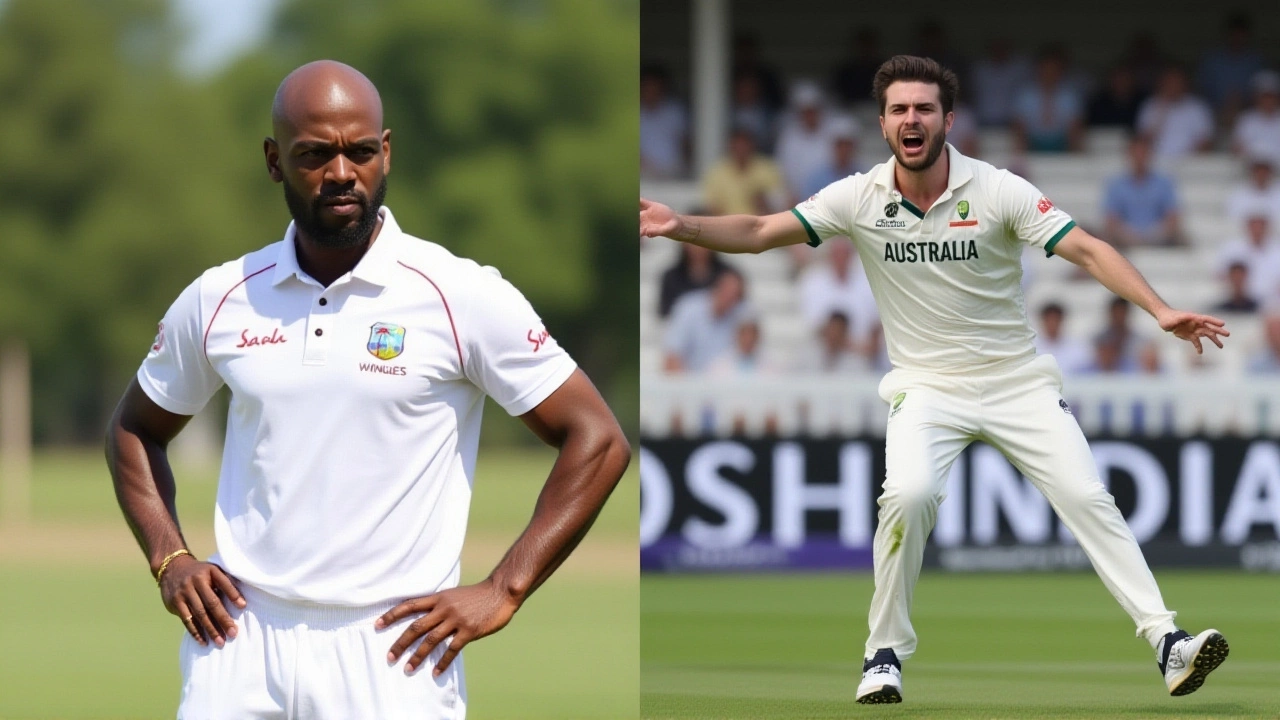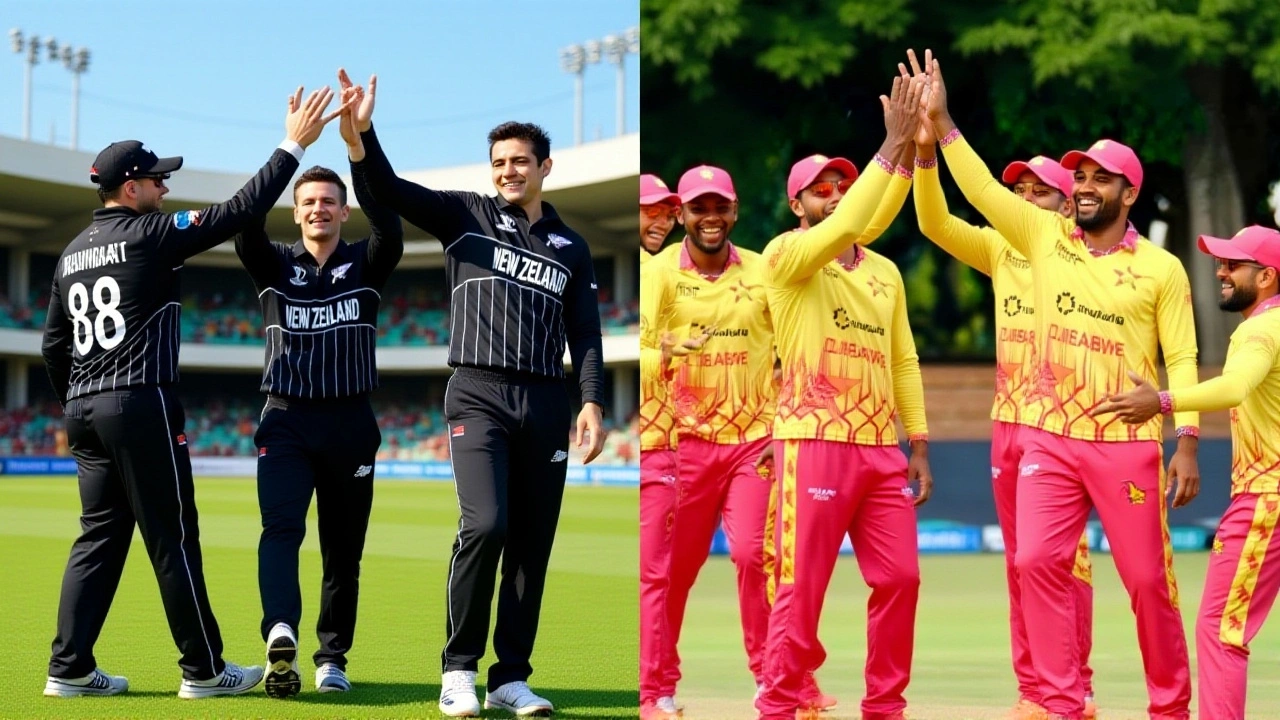India didn’t just beat West Indies—they erased them. On Sunday, November 16, 2025, at the Narendra Modi Stadium in Ahmedabad, India wrapped up a crushing first Test of the West Indies tour of India 2025 by an innings and 140 runs, leaving the tourists shell-shocked and the home crowd roaring. The match ended at 1:11 PM UTC, just after lunch on Day 3, when West Indies were bowled out for 146 in their second innings, having been forced to follow on after a dismal 162 in their first. India, meanwhile, had declared at 448/5, powered by centuries from Dhruv Jurel and KL Rahul, and a defiant 104 not out from Ravindra Jadeja. It wasn’t just a win. It was a statement.
India’s batting blitz: Three centuries, one declaration
On Friday, November 14, Dhruv Jurel, the 23-year-old wicketkeeper-batsman, announced himself on the Test stage with a maiden century—a 102 off 176 balls that felt like a coming-of-age moment. KL Rahul, India’s vice-captain, responded with his seventh Test hundred, a composed 115 that anchored the middle order. And then there was Ravindra Jadeja. At 36, he wasn’t just batting—he was commanding. His unbeaten 104 came at a strike rate of 87, with five sixes and a calmness that only comes from 12 Test fifties. When India declared at 448/5, the message was clear: we’re not here to play. We’re here to dominate.
West Indies collapse: From toss to trash
West Indies won the toss. They chose to bat. And then they unraveled. A total of 162 all out on Day 1 was embarrassing. But the second innings? That was a funeral. By the time Shai Hope, the 31-year-old captain described by The Indian Express as ‘the senior statesman of this West Indies side,’ was caught at slip by Yashasvi Jaiswal for a duck, the writing was on the wall. Brandon King fell for 5. Justin Greaves, the only West Indian to offer resistance with 25, was trapped lbw by Mohammed Siraj. The scorecard read 98/7. Then 123/9. Then 146 all out in just 45 overs. The spin duo of Ravindra Jadeja (4/36) and Washington Sundar (3/41) turned the pitch into a minefield. The fast bowlers? They just kept the pressure on. No mercy.

Why this win matters: India’s home fortress
This victory extends India’s astonishing home record to 18 wins in their last 20 Test matches. Since 2019, no team has escaped India with a series win. Not Australia. Not England. Not South Africa. And now, not West Indies—despite having played Test cricket since 1928. The last time West Indies won a Test series in India? 1971. Under Garfield Sobers. That’s 54 years. No current West Indian player was even born when that happened. Meanwhile, Ravindra Jadeja became the first Indian all-rounder since Kapil Dev to score a century and take four wickets in the same Test. And Dhruv Jurel? He’s now the youngest Indian wicketkeeper to score a Test century since MS Dhoni.
What’s next? Kolkata and the looming series decider
The second Test begins on November 24, 2025, at the Eden Gardens in Kolkata. The pitch there will be more forgiving, the crowd even louder. India will look to wrap this series up early. West Indies? They’ll need a miracle. Their current ICC Test ranking—8th—speaks volumes. Their batting average in this Test? 18.7. Their top scorer in the series? A 25 from Greaves. They’re not just outclassed. They’re out of time.

Behind the numbers: The real story
Let’s break it down. India scored 448 in their first innings. West Indies managed 308 across two innings. That’s a 140-run deficit. India bowled 128.3 overs in the second innings. West Indies faced 129.5. In other words, India bowled fewer overs than their opponents did while still winning by an innings. That’s efficiency. That’s control. Jasprit Bumrah didn’t even need to take a wicket on Day 3—he just stood at the boundary, arms crossed, watching the collapse. He didn’t have to. The spinners did the job. And the fielding? Brilliant. Jaiswal’s catch to dismiss Hope? A moment that will be replayed for years. No drop. No hesitation. Just pure instinct.
Frequently Asked Questions
How did Ravindra Jadeja’s performance compare to past Indian all-rounders?
Jadeja’s 104 not out and 4/36 mark his 12th Test fifty-plus score and his seventh four-wicket haul. Only Kapil Dev and all-time greats like Anil Kumble have matched this dual impact in a single Test for India. His century was his first since 2021, and his bowling figures were his best since the 2023 Border-Gavaskar Trophy. This performance cements his status as India’s most reliable all-rounder in home conditions.
Why did West Indies struggle so badly against Indian spin?
West Indies’ top order lacks experience against turning tracks. Only Roston Chase and Shai Hope have played more than 20 Tests, and neither has a Test average above 30 in India. Jadeja and Sundar exploited the wear on Day 3 with relentless accuracy. The West Indies batsmen played too many shots outside off-stump—21 of their 32 dismissals came from edges or LBWs. They simply didn’t adapt.
What’s the significance of Dhruv Jurel’s maiden century?
Jurel’s 102 in his 8th Test match makes him the youngest Indian wicketkeeper-batsman to score a Test century since MS Dhoni in 2005. His calmness under pressure—especially after being promoted to No. 6—showed maturity beyond his years. He’s now the first Indian wicketkeeper since Wriddhiman Saha to score a century in his first series. This could be the start of a new era behind the stumps.
Has any team won a Test series in India since 2020?
No. Since Australia’s 2-1 win in 2020, no touring side has won a Test series in India. South Africa (2021), England (2021-22), New Zealand (2022), and now West Indies (2025) have all been swept or crushed. India’s home record since 2019 is 18 wins, 1 loss, and 1 draw. That’s the most dominant home record in Test history over a five-year span.
Why is the Narendra Modi Stadium such a home advantage for India?
With 132,000 seats, it’s the world’s largest cricket stadium—and it’s a spin-friendly pitch that dries out fast. Since its opening in 2020, India has played 12 Tests here and won all 12. The crowd noise, the heat, the tight boundaries—it wears down visitors. West Indies’ batsmen admitted after the match that the atmosphere was ‘unreal.’ No team has ever lost a Test here by an innings. Until now.
What’s the historical context of West Indies’ struggles in India?
West Indies haven’t won a Test series in India since 1971, when Garfield Sobers led them to a 1-0 win. Since then, they’ve played 15 series in India and lost 13, drawn 2. Their last Test win in India? 2002 in Delhi. Their last century-maker in India? Chris Gayle, in 2006. This 2025 defeat is a continuation of a 54-year drought. The team’s decline mirrors the broader collapse of West Indies cricket on subcontinental pitches.
